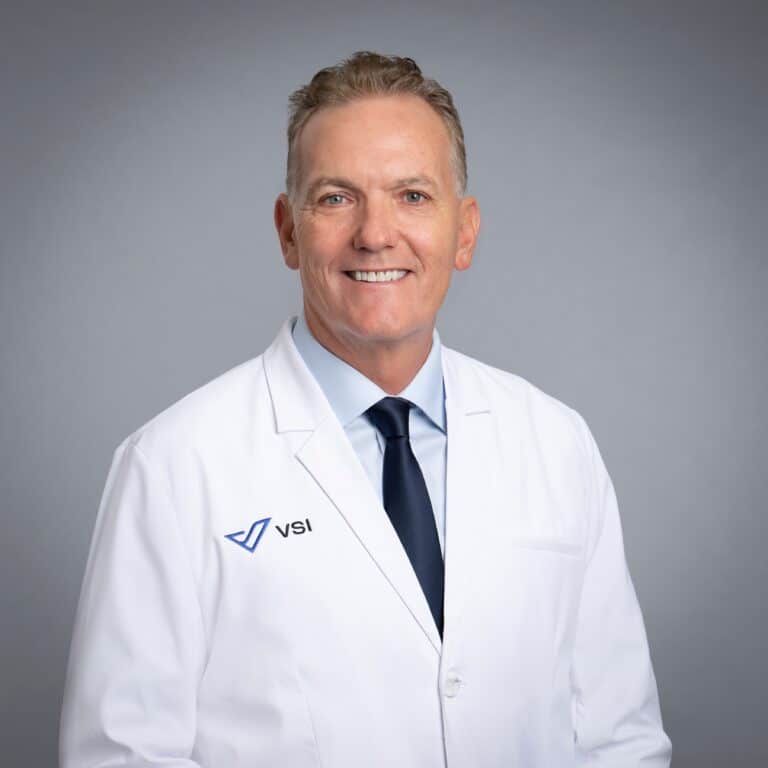Dr. Schuler Discusses His Personal Experience With Overcoming Neck Pain
Life is a degenerative process! This sums up the ugly reality that plagues all of us. Due to my family’s strong genetic predisposition for degenerative changes in the spine, I have experienced at a younger age than most the problems that come from a degenerating spine, and consequently the miracles of modern spinal health care. This has given me much personal experience to add to my professional experience in the subject of the aging spine.
We are usually born with healthy structures. Over time, through injuries, genetic predisposition, environmental factors, and potentially self-induced abuse, body parts tend to break down. In the spine, this most commonly occurs in the intervertebral discs. These large ligamentous structures that sit between the vertebrae enable our spine to move. Discs are essential in the function of our spine.
FUNCTIONS OF DISCS
Discs are often thought of as shock absorbers, but they are much more than that. Discs allow for
- Compression and distraction
- Rotation
- Side Bending
- Tilting
The more torsion we put on these structures, the greater the chance they have for injury. In my own case, I have had significant breakdown in my lumbar discs, as well as in my cervical discs. I have managed this for years with strengthening and conditioning programs, flexibility programs, proper nutrition, proper ergonomics, occasionally anti-inflammatories, and always nicotine abstinence. While these approaches have kept me functioning, they have not solved all of my problems caused by severe disc degeneration. Fortunately for me and for my patients, there are many treatments that are available today to resolve these painful conditions.
OCCUPATIONAL HAZARD
My career as a surgeon and the need to hold my neck in a flexed position for many hours while operating has accelerated the symptoms initiated by my genetically predisposed degeneration. My occupation ultimately led to disc herniations and spurs in my neck that compressed the nerves. Because of these compressed nerves, I developed pain shooting into my arm and weakness. After failing non-operative treatment, ultimately, I elected to proceed with surgery in order to eliminate the pain and restore my function.
My first procedure was a microsurgical minimally invasive operation in the back of my neck where bone spurs were shaved off spinal nerves. I was able to gain five years of excellent relief with this approach and was back to the operating room as a surgeon within three weeks of the procedure.
As expected, the degeneration progressed further and ultimately became an insurmountable problem. At this point, I was treated with an operation through the front of my neck, where a fusion was combined with two disc replacements. I had three levels that required treatment. The worst level and most degenerative was decompressed and fused from the front. The two levels above that had artificial discs placed in order to preserve the maximum amount of motion and to prevent increased break down of the adjacent levels. This hybrid construct has been very effective in relieving the pressure on my spinal cord, as well as the nerves. This eliminated my pain and enabled me to maintain optimal function of my spine.
Over three years later, I am excited to report that I have no ongoing symptoms, and I am fully capable of doing my occupation as a spinal surgeon, but most importantly enjoying my life as a father, husband, and friend. Thanks to this surgery, I am actively engaged in many activities including golf, tennis, swimming, weight training, running and wilderness travel.
EXERCISE IS KEY
I maintain an active exercise program emphasizing aerobic and anaerobic exercise, strength training, core and total body, as well as a flexibility program. My daily routine varies, but my goal is to perform some or all aspects of the above-mentioned program at least five days a week. This keeps me functioning optimally and is a routine that I recommend for all of my friends and patients. The old adage, “A rolling stone gathers no moss,” could never be truer as we get older. We must maintain a daily exercise and flexibility program in order to minimize the deterioration that occurs with time. The better we maintain our appropriate body weight, use good ergonomics, and keep our muscles strong and our joints flexible, the better we will function and the less pain we will have as we move through life. People that develop weak or imbalanced muscles, or fail to maintain proper exercise, struggle with pain and function. My clinic is filled with patients that need the encouragement or guidance to get into and maintain a proper program. Unfortunately, our busy lives often derail these approaches, but is an area we all need to constantly focus on to optimize our lives.
In the future, we will have new techniques and new technologies. One we are actively implementing today is the use of stem cell therapies to heal injured discs and spinal structures without surgical intervention. We are extremely excited by initial years of work in this field and see that there will be great promise in the future with these techniques. The concept of healing an injured degenerative structure to the point that we improve its function, decrease pain, and ultimately return the patient to a more functional state is extremely exciting.
The important take-home message from the current state of spinal health care is that there is hope for those suffering from neck and back problems today. The current treatments and successes available from proper therapies, proper nutrition, injection procedures, minimally invasive surgeries, regenerative therapies, and motion preserving treatments are very exciting. The main limitation that exists today is an individual’s commitment to doing what they need to do to live a healthy life.
Topics covered
About the Author
Featured Resources
Insights to Achieve a Pain-Free Life


